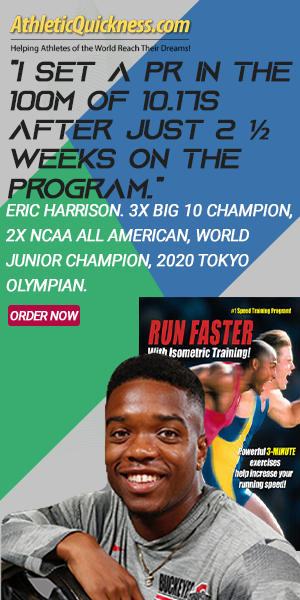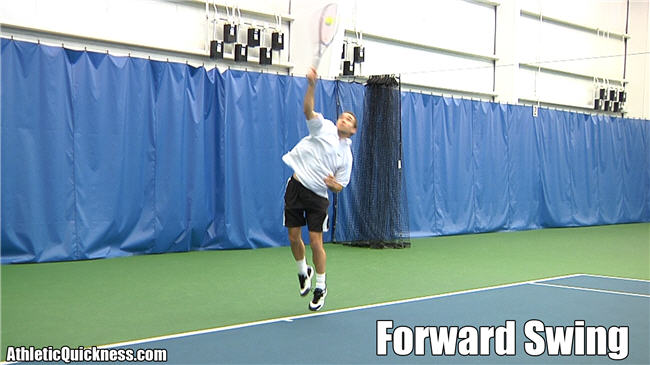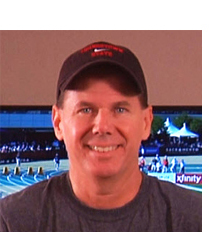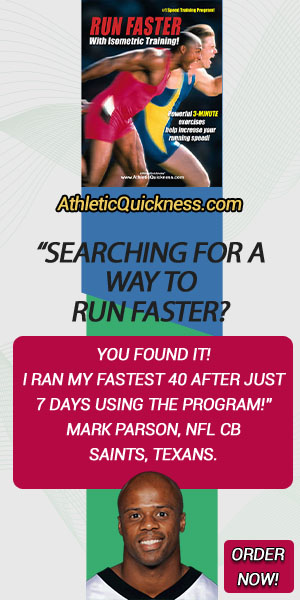Developing Speed and Power
for the Tennis Serve
Serve With More Speed and Power by Knowingthe Mechanics of the Serve and Which Muscles to condition
Part 1 – The Stance & Back Swing
Part 2 – The Forward Swing
Part 3 – The Follow Through
Tennis Speed – Best Exercises for Racket Speed & Court Quickness
Part 2 of 3 – The Forward Swing
The forward swing has two distinct transitions in body positions as follows:
- Transitioning from the trophy pose position (Figure 1-8a) to what is called the racket drop position (Figure 1-8d) and
- Transitioning from the racket drop position (Figure 1-10a, bottom page 9) to the contact with the ball position (Figure 1-10d).
Each of these transitions has three distinct features of their own.
Transition #1 – From Trophy Pose to Racket Drop
- Racket Drop.
- Racket Drop
The first noticeable motion that takes place during this first transition of the forward swing is the dropping of the racket behind the back, which is where the name racket drop comes from.
Starting from the trophy pose in Figure 1-8a, with the racket arm in the “L” position, as the racket begins to drop behind the back, the right upper arm, and perhaps more noticeably, the right elbow, starts to rise upward.
This can be seen by focusing on the right arm and elbow in Figures 1-8a, 1-8b, 1-8c and 1-8d. This results in maximum external rotation of the racket arm at the shoulder joint, and this external rotation is caused by the action of the Teres Minor and Infraspinatus muscles.
2) Tossing Arm Drop
The second noticeable movement that takes place during this first transition of the forward swing is the dropping of the tossing arm.
Again, from the trophy pose in Figure 1-8a, if you focus your attention on the tossing arm through the progression of pictures from Figure 1-8a to Figure 1-8d, we see that it is being pulled down to the side of the body. This drawing down of the tossing arm enables the racket arm shoulder to flow freely over and across the upper body later during the service motion and is what many refer to as the shoulder over shoulder motion.
The muscles that draw the tossing arm down to the side of the body are the Latissimus Dorsi and Teres Major muscles.


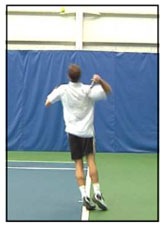
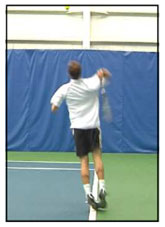
3) Leg Push.
The third noticeable movement that takes place during this first transition of the forward swing is the leg push.
Again, from the trophy pose position in Figure 1-9a, your weight starts out evenly distributed on the balls of each foot and the knees flexed. Now focus your attention on the knees and ankles though the progression of pictures from Figure 1-9a to Figure 1-9d.
The knees straighten out which is a function of the Quadriceps muscles and the ankles begin to plantar-flex, or point down, which is a function of the Ankle Plantar-flexors.
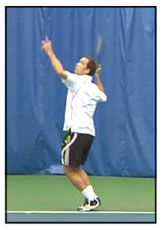
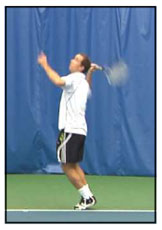
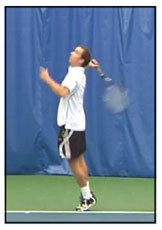
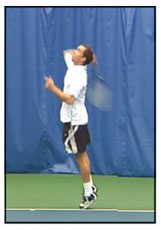
Transition #2 – From Racket Drop to Contact With the Ball
1) Internal Rotation of Racket Arm Shoulder
The first noticeable movement that takes place during this second transition of the forward swing is internal rotation of the racket arm shoulder.
Internal rotation, or medial rotation, is the inward turning of the upper arm in toward your body; however, with the racket arm in the drop position, internal rotation is more correctly defined as the upward and then forward rotation of the upper arm at the shoulder joint.
In the racket drop position (Figure 1-10a), the shoulder is placed in maximum external rotation, so that the internal rotators of the shoulder can be stretched. This stretching of the internal rotators during the racket-drop is the last group of muscles to undergo an elastic stretch, and it is necessary to complete the loading of the shoulder joint and enable it to deliver maximum speed and power during the serve.
We can see the releasing of these stretched muscles here when you focus your attention on the racket arm through the progression of pictures from Figure 1-10a to Figure 1-10d.
The muscles that allow for this internal rotation of the shoulder from the racket drop position to the contact point are the Subscapularis, Latissimus Dorsi, Teres Major and>Pectoralis Major muscles.
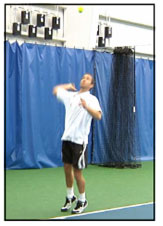
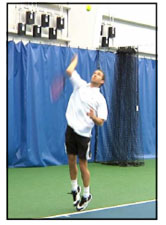

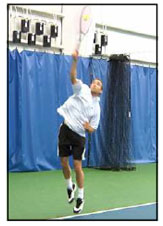
2) Pronation of Racket-Arm’s Elbow
The second noticeable movement that takes place during this second transition of the forward swing is pronation of the racket-arm’s elbow.
At the start of this motion, the racket-arm hand is being swung with the knife-edge of the hand pointing upward.
The knife-edge is the side of the hand where the little finger is (Figure 1-11a), and it remains facing up in this position until the hand rises above the head (Figure 1-11b).
From there the elbow begins to turn or pronate toward the net (Figure 1-11c). This causes the palm of the racket hand to face the net (Figure 1-11d) which opens the strings of the racket just before contact is made with the ball.
You can see this if you focus on the racket hand through the progression of pictures from Figure 1-11a to 1-11d. The muscles involved in pronation of the elbow are the Pronator Teres and Pronator Quadratus.
3) Upper Body Rotation
The third noticeable movement that takes place during this second transition of the forward swing is rotation of the upper body toward the net, and you can see this if you focus your attention on the upper body through the progression of pictures from Figure 1-10a to Figure 1-10d.
The muscles responsible for this are the lateral rotators of the spine and their names are the Multifidus, Rotatores Spinae and External Abdominal Oblique muscles.
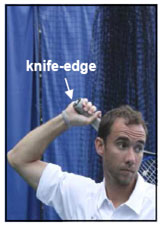
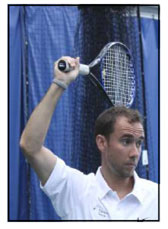
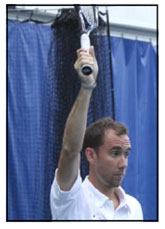

Always glad to help!
Dr. Larry Van Such
 
Part 1 – The Stance & Back Swing
Part 2 – The Forward Swing
Part 3 – The Follow Through
Tennis Speed – Best Exercises for Racket Speed & Court Quickness

